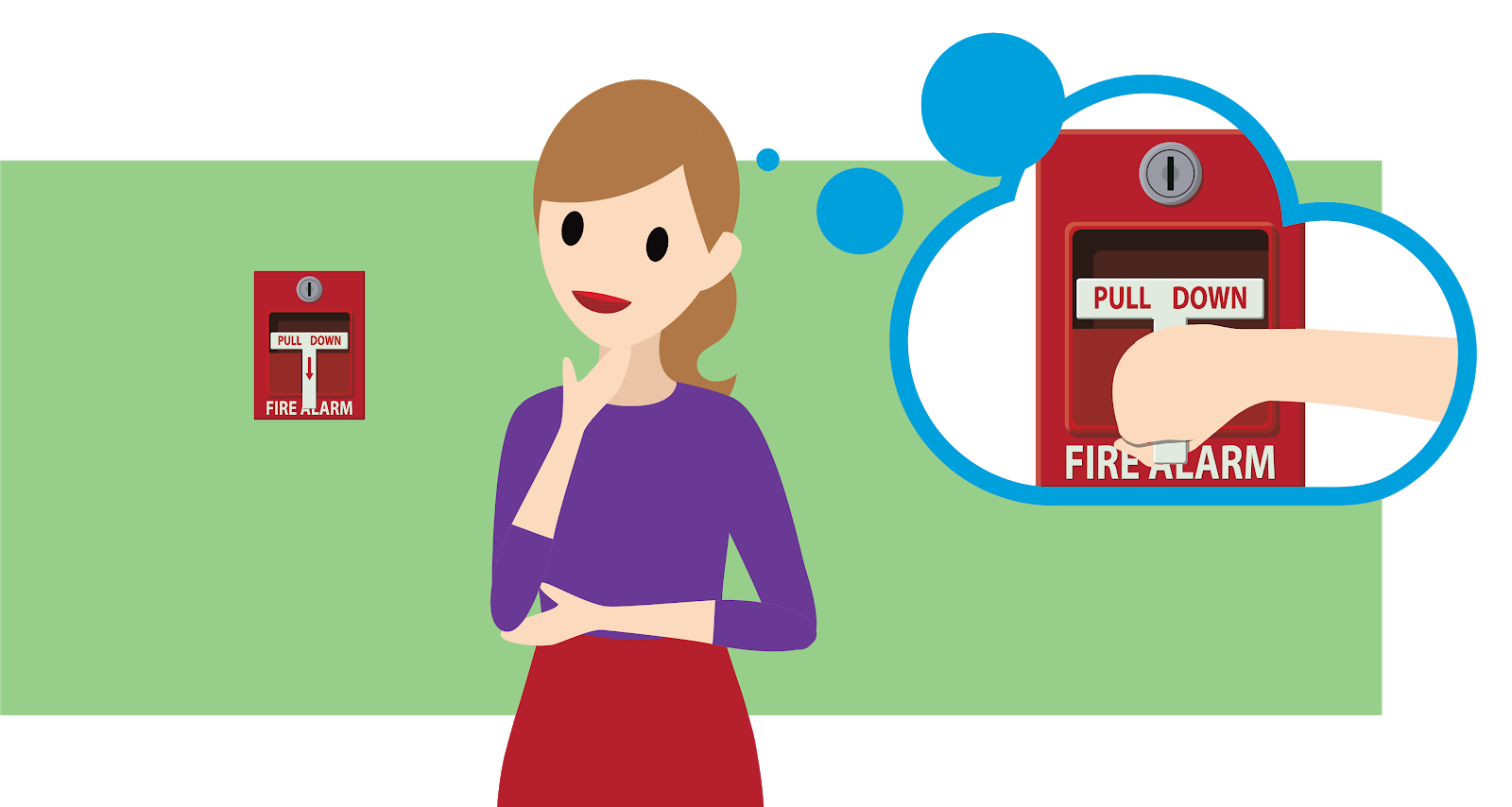Measure Engagement with Your Team
Learning Objectives
After completing this unit, you’ll be able to:
- Define engagement.
- Identify methods for measuring engagement.
- Describe the four-step approach to addressing engagement issues.
- Summarize how self-reflection helps drive engagement.
- Assess your team’s engagement by recognizing its signs.
Engagement Defined
Think about someone on your team who you really admire. When you’re in a meeting, do they contribute and listen when someone’s talking? Do they offer to help you when you’re blocked? Do they seem completely invested in their projects, never missing a deliverable or detail? If the answer to all of these questions is “yes,” then this person is demonstrating true engagement.
Engaged employees are:
- Fulfilled by their positions
- Excited to come to work
- Hopeful about the future of the company and their role
- More likely to stay with the company for the long term
Engagement happens when you are creatively connected to and focused on your work and have a strong sense of purpose driving you toward the finish line. It’s a beautiful thing.
But how do you know when someone’s engaged? Glad you asked.
Engagement Measured
At the organizational level, companies often use employee surveys to measure company-wide engagement levels. One expert in the employee engagement business is Gallup, whose Q12 survey uses the following traits to assess engagement:
- Connection to the company mission
- Clarity on what’s expected
- Frequency of feedback and recognition
- Receptivity to employee opinions
- Commitment to quality work
- Having a friend at work
Surveys like the Q12 give companies an idea of engagement level across the organization and potential areas to put actions plans in place. That’s definitely helpful, but because surveys are often broad and anonymous, they don’t always tell you specifically how your direct reports feel about their latest projects.

To find out about how your individual team members feel about their work, career aspirations, and day-to-day experiences, and to gauge their energy levels, ask some questions such as:
- How are you doing?
- How are things going for you?
- How would you describe your ideal day at work?
- What about your job inspires you?
- What part of your job do you like the least (or find unsatisfying)?
The simple act of asking questions and truly listening to the responses positively impacts your employees’ level of engagement. With this in mind, let’s unpack engagement’s finer points so that you know exactly how to motivate, inspire, and ultimately engage your team.
Proactively Address Engagement
Meet Tammi. When Tammi wakes up in the morning, she dreads going to work. As the day drags on, she thinks about pulling the fire alarm just to get out of the building. She rarely meets deadlines and turns in half-baked work to her manager, Kris.

Tammi’s negative attitude has also been affecting her coworkers. They listen to her complain constantly and are frustrated by her less-than-stellar team contributions. Kris begins to receive complaints from customers about poor service and emails from internal partners about her team’s drop in productivity and skyrocketing rate of attrition. Uh oh!

Clearly Tammi is actively disengaged. And her behavior could be moving her teammates toward disengagement.
Ever had a “Tammi” on your team? Wonder what you can do to address or prevent engagement issues like this from rearing their ugly heads?
Here’s a four-step approach that Kris and every manager can use to proactively address engagement issues:
- Self-reflect on your role in driving engagement.
- Recognize the signs and assess your team’s engagement.
- Conduct engagement conversations.
- Make an engagement plan and follow up.
With this plan in mind, let’s take a look at the first two steps and how you’ve been engaging your team thus far.
Step 1: Self-Reflect on Your Role in Driving Engagement
Before looking at what’s going on around you, look inside and reflect on your own role in driving engagement.
Check Your Own Level of Engagement
If your days as a manager make you feel like you’re constantly putting out fires, chances are you also feel stressed out, anxious, or frustrated. When employees then ask questions about next steps in their career or changing roles, it’s hard not to feel the pressure and respond without sounding defensive.

Check in on your own level of engagement by answering the following questions:
- How am I feeling? (Give yourself permission to answer this question honestly.)
- Am I motivated and inspired by what I’m working on?
- Do I feel supported in my everyday work?
- Is what I’m doing right now aligned with my long-term career goals?
- Do I value my relationship with my manager and colleagues?
- Is there anything in my home life that affects my attitude at work?
- Do I have enough time outside of work to do things that make me feel healthy and fulfilled?
If your answers reveal that you might not be all that engaged, it might be time to speak with your manager so that you have the mental bandwidth to work with your team members on their own engagement. Here are some other tips:
| If you’re feeling... | Then consider... |
|---|---|
| Burned out. |
Taking time off to relax and recharge. |
| Uninspired. |
Reflecting on what excites you about your job. |
| Unmotivated. |
|
Reflect on What You’re Doing with Your Team
You’ve looked inward, now look outward at how you’re interacting with your team.
Start with voluntary turnover. Does it seem like you’re losing employees left and right? If competitors are poaching your employees or if they’re leaving without explanation, it’s definitely time to evaluate how you’re working with them.
Here are a few questions to reflect on before opening a dialogue:
- How often are you giving your employees feedback?
- How often are you meeting with them one-to-one?
- Have you given them words of encouragement on their most recent project?
- When is the last time you provided personalized recognition and thanks to one of your team members?
- Have they encountered many roadblocks in their current projects?
- What motivates them to do their best work?
- Do any unconscious biases come into play that affect the way you interact with team members?
- Are you favoring your in-person team over your remote workers?
- Are your team members experiencing anything in their personal lives that might be affecting their work?
Consider Asking for Feedback
After you’ve completed your self-evaluation, it’s time to ask for feedback. One way to do this is through a Great 360 assessment, a formal evaluation in which you can get feedback from peers, direct reports, managers, and clients. The evaluation helps you gauge:
- Management and leadership competencies
- Strengths
- Areas of improvement
- Progress on previously stated goals
- Blind spots and behaviors that are difficult to self-realize
Inviting your reports to participate in a Great 360 assessment makes them feel that their opinions matter and that you’re listening to their concerns.
Outside of formal evaluations, simply asking, “How am I doing?” empowers your team members to clarify what makes them feel more engaged. To kick-start a helpful and rewarding conversation, you also can ask:
- What could I do to better support you?
- What do you think we could do to drive success within our team?
- What could I be doing better to connect our work with the organization’s vision?
- Do you have any suggestions for time management or organizational efficiency?
Another way to find any “bugs” in your management plan is with the Johari Window activity (available in the Engage and Retain Employees pack in the Resources section). It gives you insight on your skills, strengths, development opportunities, and hidden talents to leverage as a manager.
Step 2: Recognize the Signs and Assess Your Team’s Engagement
Now that you have a handle on your own level of engagement, it’s time to start making headway with evaluating your team and leading them toward a greater sense of fulfillment.

Being able to tell if someone is unmotivated or just having a bad day is an important first step. Engagement looks different for everyone, but let’s look at a few behaviors and attitudes that often signal high or flagging levels of engagement:
| An engaged employee... | A disengaged employee... |
|---|---|
| Always puts in the extra mile to turn in work on time. |
Misses deadlines frequently. |
| Demonstrates enthusiasm about assignments. |
Turns in work that is sloppy or unfinished. |
| Demonstrates accountability and willingness to take on new projects. |
Blames others, and points fingers when projects don’t go according to plan. |
| Participates in company events and instills a sense of camaraderie. |
Completely disconnects from coworkers. |
| Looks forward to the future of the company. |
Demonstrates pessimism about most projects, and conveys a negative outlook. |
| Puts phone and computer away during meetings. |
Is distant, unfocused, or disinterested during meetings. |
Also pay attention to body language. For example, is a team member slouching? Smiling? Hiding under the desk? Look for the signals and body language that indicate engagement and disengagement.
| An engaged employee... | A disengaged employee... |
|---|---|
| Is alert and focused, and responds openly in discussions. |
Projects a glazed-over expression in conversation, is distracted, and squints or narrows eyes. |
| Squares shoulders, directly facing the speaker. |
Turns shoulders and upper body away during conversation, and clenches jaw. |
| Often nods in consent, and has neutral or relaxed lips and jaw. |
Purses mouth and compresses lips. |
| Crosses ankles, positioning legs toward the speaker. |
Pulls away from the speaker, legs pointing toward the exit. |
Complete a Team Assessment
With this roadmap of reactions and a blueprint of body positions in mind, use these questions to evaluate where you stand with each member of your team:
- Have you been consistently conducting 1:1 conversations?
- During 1:1s, do you discuss topics beyond the tasks or projects at hand (for example, how they do their job and what motivates them)?
- Have you had quarterly career conversations in which you discuss their development goals and aspirations?
- Do they respond well to your feedback?
- Do you provide recognition consistently when they do something well?
- Do you know what they like to do in their free time?
- Do you know how they do their best work? Have you been mindful of their approach to deadlines and working hours?
- Do they know how valuable their work is to the team? To the company at large?
- Have they been able to attend a training, conference, or other learning program?
How did that go? Were you able to answer affirmatively to each question for all your employees? If not, it might mean a few things:
- You found an area of opportunity for growing closer and being more supportive of your employee.
- You thought you were doing a good job engaging your employees, but there’s possibly more you can do. Consider asking for feedback, conducting more engagement conversations, partnering with your manager to get support, and responding to constructive feedback.
- You’ve been making the effort to be a supportive manager, but your employee is disengaged. It’s time for a deeper engagement conversation to try to turn it around.
Don’t worry if one of these situations applies to you. We’ve got you covered with help throughout the rest of this module.
In the next unit, we give you tips and strategies to conduct an engagement conversation and create a positive, growth-driven environment where your employees feel engaged and supported each and every day. Keep reading!
Resources
- TED Talk: Mihaly Csikszentmihalyi—“Flow, the Secret to Happiness”
- Website: Great 360
- Website: CliftonStrengths Online Talent Assessment
- PDF: Johari Window (Download from the "Engage and Retain Employees" Pack)
- Word Document: Engagement Team Assessment (Download from the "Engage and Retain Employees" Pack)
